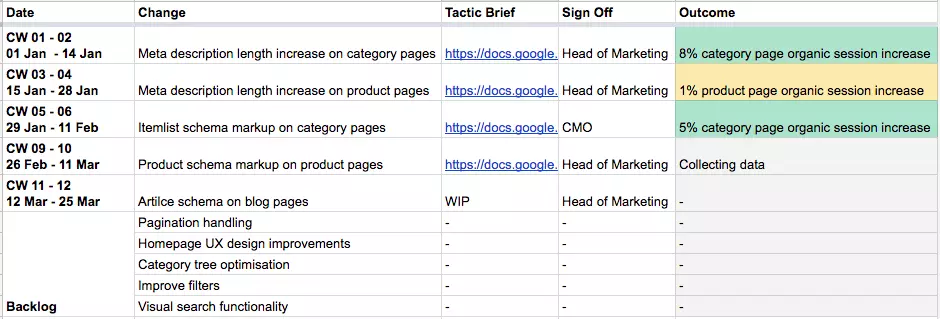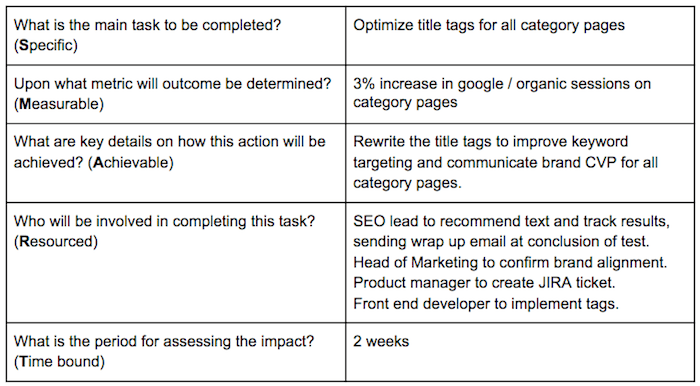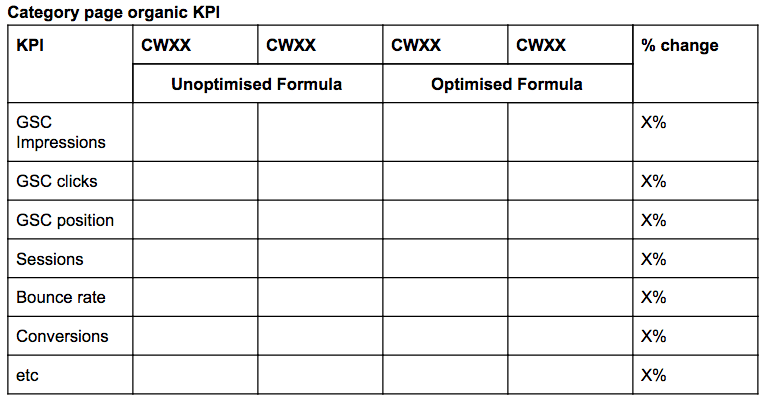

Last updated on

Effective SEO rarely succeeds with just one person at the helm.
You need resources and support from top executives—whether it’s the CMO, head of product, or even the CEO.
Here’s the catch: those extensive SEO documents filled with objectives, audience insights, competitor analysis, keywords, and complex Gantt charts outlining six months of optimization plans—are rarely read.
In fact, they often become a roadblock to getting the necessary approval for resources.
Executives can swiftly approve a clear, concise email request, but finding time to thoroughly review a detailed strategy document is a luxury they don’t have.
Moreover, even if they approve today, shifting business priorities, evolving competitive landscapes, and frequent algorithm updates can render that strategy outdated.
SEO operates in a state of constant change and requires adaptability on a monthly, or even weekly, basis.
So let’s move away from lengthy documents and focus on actionable steps with agile SEO.
Agile SEO focuses on incremental improvements.
Instead of tackling complex projects all at once, break them down into smaller, manageable changes.
This approach ensures steady progress.

Forget striving for SEO perfection.
The goal is to launch a minimum viable product (MVP) and track its impact on key metrics.
With performance data in hand, you can make informed decisions and secure the resources you need based on KPI results.
Here’s an example:
Imagine your main objective is to completely revamp the website architecture for an e-commerce site. This includes updating URL structures, page titles, meta descriptions, and H1 tags for the homepage, category pages, and product pages.
The traditional approach involves presenting the entire SEO project in one go, arguing that it will boost SEO performance.
You highlight how the site will rank higher and see a significant increase in organic traffic—points that are valid.
However, the comprehensive document detailing all the reasons and requirements is often too complex to review effectively.
The project may appear overwhelming in scope and could be pushed off your development team’s roadmap, as they might view it as a potential overload on their development cycle.

What if you focused on micro-wins instead?
Rather than pitching the entire SEO project at once, seek approval for a small but impactful change.
For instance, propose optimizing just the title tag and meta description of the homepage.
This request will be concise, fitting into less than a page, making it easy to review and implement. Because it’s a manageable change, it’s simpler to fit into a development sprint.
If this change leads to positive KPI results, such as a 3% increase in homepage organic sessions, you can then advocate for similar adjustments on category pages. Highlight that if these changes yield comparable improvements, it could result in X additional organic sessions.
By demonstrating the effectiveness of these smaller tactics, you build trust in your approach. Additionally, since the requests are minor, your development team is more likely to accommodate them.
Continue this process incrementally, and you’ll gradually achieve a complete site overhaul.
Now that we know to move away from lengthy SEO strategy documents and focus on agile, “snackable” tactics, we still need a way to track and manage:
This information should be easily accessible, digestible, and adaptable.

One effective solution is an “SEO calendar” document.
Elements of an SEO calendar:
The advantage of a calendar layout is its flexibility and time relevance. Adjusting priorities is straightforward—simply move de-prioritized items to the backlog.
It serves as a comprehensive website change log for SEO, providing a clear timetable of both past and upcoming changes.
Anyone curious about KPI increases on specific dates can quickly find answers at a glance and access detailed information with a single click. This feature is especially useful for troubleshooting.
For team leaders, any gaps in the iteration cycle become immediately visible on the calendar, making it easier to identify and address the underlying issues.
Tactic briefs offer two key benefits:
Pre-launch: They provide a concise summary of the Five Ws of your SEO change, helping to secure stakeholder buy-in. Once approved, the brief serves as the specification for execution by others.
Post-launch: They document the actual changes made, their impact on KPIs, and the lessons learned. This section also outlines the next steps, if applicable.
A typical tactic brief includes five sections:
The overview section should address the following key points about the test:

The SMART goal outlines the high-level tactical approach.
Before diving into detailed documentation, make sure to align your goal with your stakeholders. This alignment ensures that the change supports overall business objectives.

This section will vary depending on your test, but always aim to communicate both the “before” and “after” states. This creates a clear historical record for future reference.
Focus on including only the essential details—no more, no less.
Using tables can make the information easier to scan.
For instance, if you’re documenting a title tag change, a single table might suffice.

Avoid lengthy paragraphs. Instead, clearly present the outcome: what was the state before, and what will it be afterward?
Do not include details on how the task was executed.
This section should include a primary table to clearly show the percentage change between benchmark weeks and the SEO changes from a full-funnel perspective. Additional tables can be used to provide more detailed insights.
Here’s an example of the type of table you might include.

In this section, provide a concise analysis of the results.
Since the data is already presented in the table above, there’s no need to repeat the numbers. Focus on interpreting what the data means and outline the next steps based on these insights.
An agile SEO system offers flexibility and transparency.
You can always track current actions and see how they impact KPIs.
Rather than chasing an ideal SEO strategy, concentrate on taking action and achieving results.
Original news from SearchEngineJournal